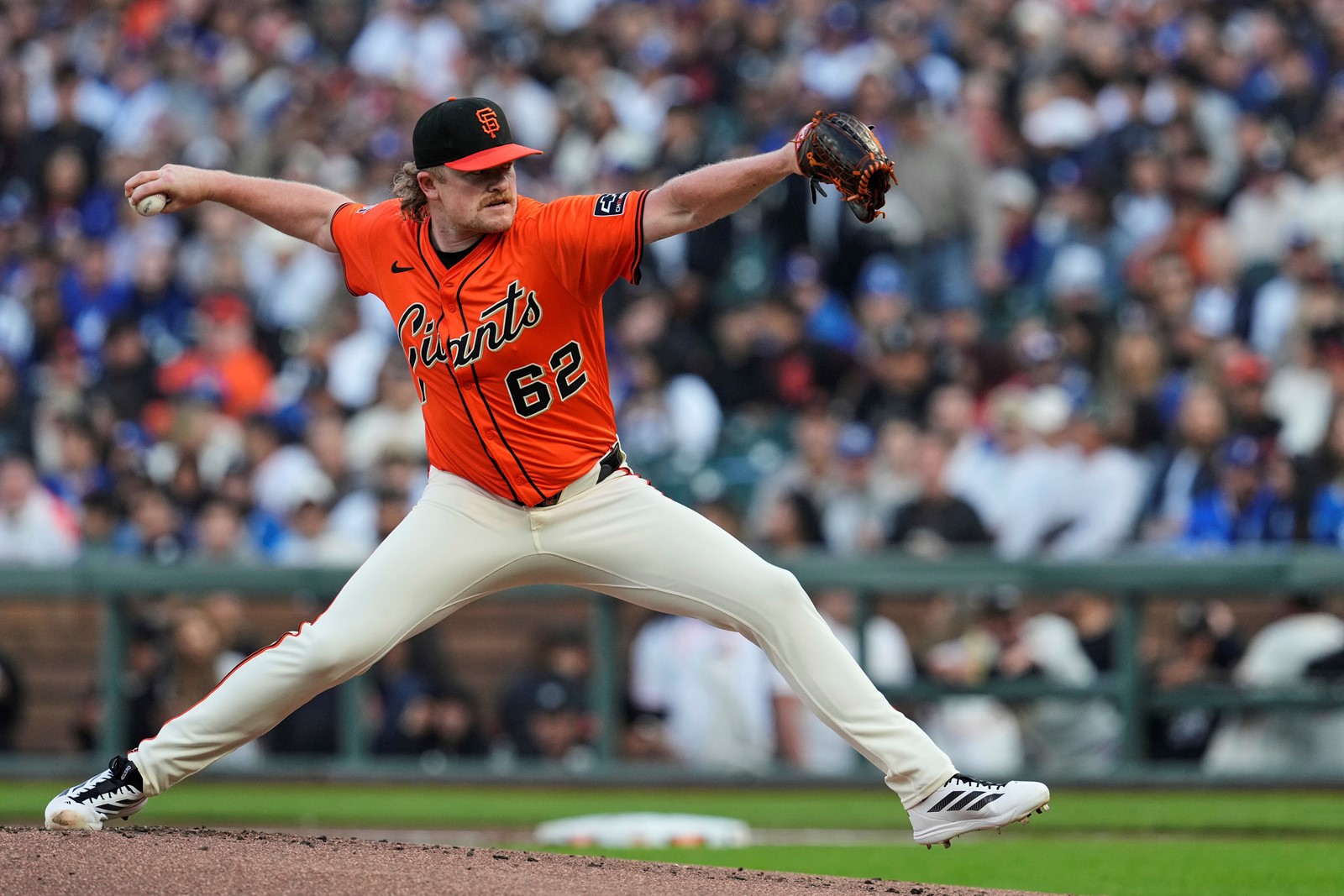
SAN FRANCISCO >> Logan Webb has long joked that he’s not a strikeout pitcher. In the past, the San Francisco Giants ace’s reticence was warranted. The numbers, though, are hard to deny.
Webb, who was selected to his second straight All-Star team and was expected to pitch an inning Tuesday in Atlanta, finished the first half with a National League-leading 125 2/3 innings and a 2.94 ERA. He’s providing his usual volume but he’s drastically increasing his strikeout rate, currently on pace to eclipse 200 strikeouts in a single season for the first time in his career. In a year where the league-wide strikeout rate has slightly dipped, Webb ranks fourth in baseball.
Webb’s strikeout spike isn’t just the product of a tweaked changeup and a slight shift on the rubber, but the right-hander’s willingness to use three different fastballs. One is his bread and butter. One is performing better compared to previous seasons. One is, by most metrics, an awful offering that he calls his “MVP pitch.”
Together, they’ve allowed Webb, 28, to further evolve in his seventh season in the majors.
“In ‘21, he was listening to a lot of his teammates tell him how good he was, but a lot of times, you have to have the success to start to believe that,” president of baseball operations Buster Posey said of Webb’s first full season. “He had success that year and it just continued to build and get better and better. He can pitch all four quadrants now. There’s not a lot of guys that can do that. Now, you add that he’s got elite movement on his pitches, it’s a recipe for success.”
Giants lefty Robbie Ray said: “It’s really fun to watch. He’s definitely taken his game to the next level.”
The sinker has long been Webb’s foundational fastball. He throws the two-seamer more than any other pitch and it has been his most valuable offering over the last two seasons. Webb gets six more inches of vertical drop on his sinker compared to similarly thrown pitches, and the product is the eighth-highest groundball rate of baseball.
If Webb’s sinker and changeup are the stars of the show, then Webb’s four-seam fastball and cutter are the supporting actors. Neither are prominent parts of his repertoire, but each has a narrow and necessary role.
Webb threw a couple cutters in ‘20 and ‘21, abandoned the pitch in ‘22 and ‘23, then re-introduced it in ‘24. The right-hander’s cutter accounted for 2.6 percent of his total pitches last year and he’s upped his usage to 9.3 percent. What’s odd about Webb’s increased reliance on his cutter is that the pitch rates out very poorly.
This season, opponents have a .436 batting average and .615 slugging percentage against Webb’s cutter. In his final start of the first half, Dodgers slugger Shohei Ohtani sent a cutter from Webb into McCovey Cove. Compared to similarly thrown cutters, Webb is getting 3.3 fewer inches of movement.
Despite the results, Webb throws the pitch because it gives him something to throw that moves inside to left-handed hitters. He refers to the cutter as his “MVP pitch” not as a boast, but because it’s literally designed for former MVPs such as Ohtani and Dodgers first baseman Freddie Freeman, as well as left-handed hitters generally. Of the 182 cutters that Webb has thrown, 147 of them have been against left-handed hitters.
“It’s just a different look,” Webb said. “If you were probably going to look metric-wise, it’s probably not the greatest pitch but it works because I throw a sinker.”
“One analogy I’ve used in the past is if your pitches are stocks, you really want to invest in the earners more,” said pitching coach J.P. Martinez. “For Webby, the cutter doesn’t grade out very well, but it moves towards the hitter and not away from the hitter.”
For Martinez, an emphasis on the cutter was an idea he got from a certain team down south.
“On the cutter, that’s actually something I stole from the Dodgers’ playbook,” Martinez said. “All their sinker-slider guys, they started adding cutters to keep lefties honest. I watched it play out in real time against all our lefties, whether (Brandon) Crawford or LaMonte (Wade Jr.) or Brandon Belt. I thought it was something we could pick up and use ourselves to neutralize left-handed hitters.”
Rounding out Webb’s three-fastball mix along with his sinker and cutter is the four-seam fastball, a pitch that’s become invaluable to his repertoire thanks to a slight tweak.
Webb threw his four-seamer 43.5 percent of the time as a rookie in 2019 but the pitch got absolutely hammered. Opposing hitters had a .339 batting average with a .581 slugging percentage against the four-seamer that year, prompting Webb to gradually phase the pitch out of the mix. By 2022, the four-seamer accounted for less than four percent of his pitches.
This season, Webb is throwing his four-seamer 7.2 percent of the time. It’s the least-utilized pitch in his mix, but similar to his cutter, Webb’s four-seamer has a narrow focus: strikeouts.


 PREVIOUS ARTICLE
PREVIOUS ARTICLE
